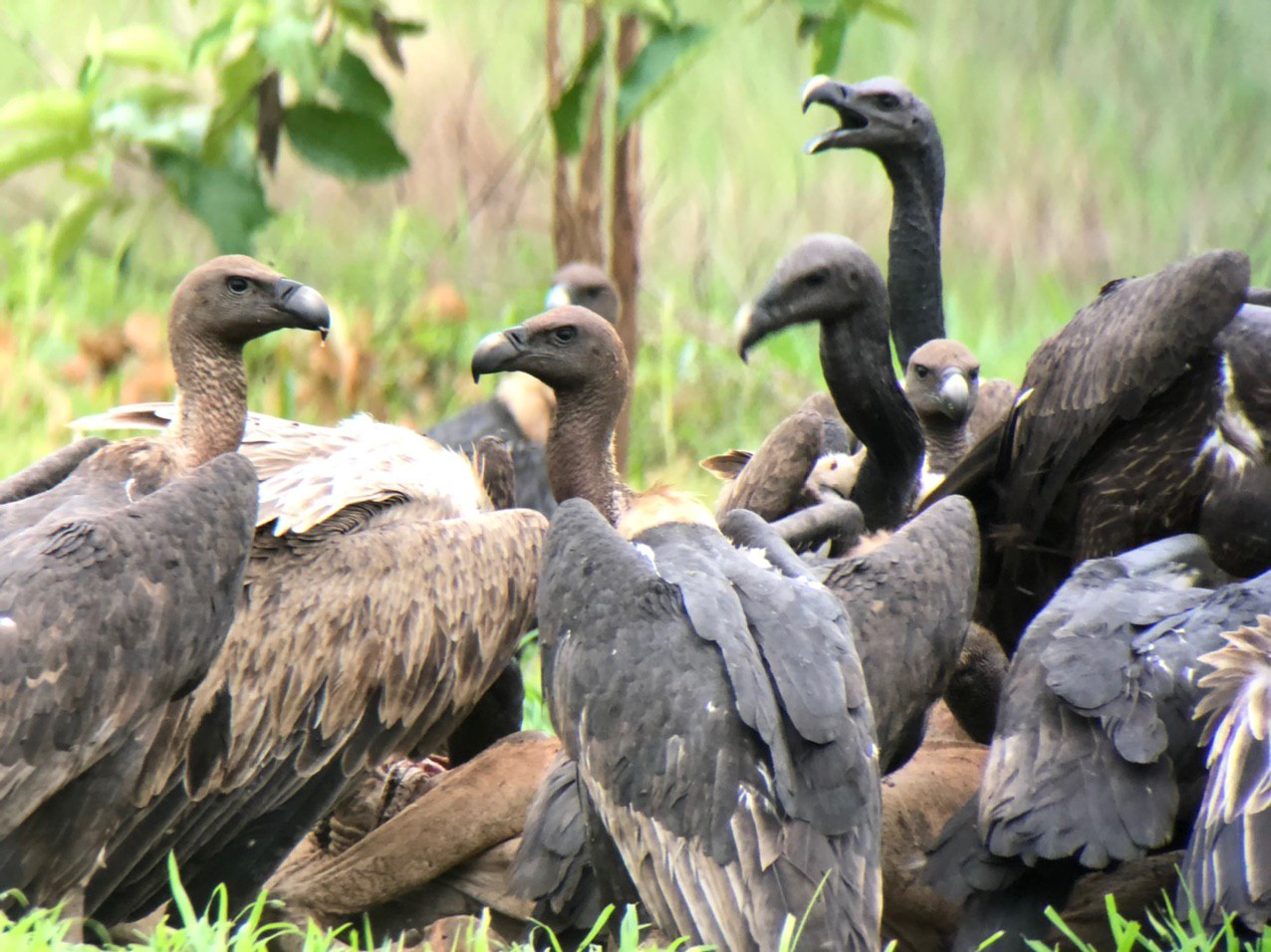
There were 121 vultures in the four natural protected areas: 20 red-headed (Sarcogyps calvus), 35 slender-billed (Gyps tenuirostris), and 66 white-rumped (Gyps bengalensis), according to 2021 census data. SUPPLIED
A team of wildlife conservationists on June 17 started the third of five annual vulture counts, to collect data and prepare conservation plans for the three critically-endangered species found in Cambodia.
The census will be simultaneously conducted at four locations: Sambor Wildlife Sanctuary in Kratie province, Siem Pang Wildlife Sanctuary in Stung Treng province, Chheb Wildlife Sanctuary in Preah Vihear province and Srepok Wildlife Sanctuary in Mondulkiri province.
Environment ministry secretary of state Neth Pheaktra and representatives of WWF and NatureLife Cambodia are to take part in the census in Sambor Wildlife Sanctuary.
“The annual vulture censuses serve to gain a better understanding of the changes in the number of vultures in Cambodia, to make conservation easier and take measures to protect these rare species,” said Pheaktra.
He said that 2021 census data indicated that there were 121 vultures in the four natural protected areas: 20 red-headed (Sarcogyps calvus), 35 slender-billed (Gyps tenuirostris), and 66 white-rumped (Gyps bengalensis). All three species are listed as “critically endangered” in the IUCN Red List of Threatened Species.
The population has ranged between 120 and 140 since 2014.

The population has ranged between 120 and 140 since 2014. SUPPLIED
The August 2021 vulture count found 41 specimens in Sambor Wildlife Sanctuary alone, comprising all three species, doubling from the 20 found in the previous census in late June of the same year.
Cambodia could very well be the last hope for the Old World vultures, with research and conservation efforts to protect the birds beginning in earnest in 2004, when a survey estimated the population at 162. Although numbers soared to 289, the 2011-2014 period witnessed a concerning drop.
WWF researcher Eam Sam Onn noted that the five censuses are conducted once in each of March, September and December, but twice in June as vulture eggs tend to hatch in April and May.
WWF-Cambodia country director Seng Teak suggested that the vultures flock to Sambor Wildlife Sanctuary during the rainy season due to the ample sources of food available and relative safety of the 50,093ha area.
Pheaktra stressed that more needs to be done to protect the vultures. Still, he appreciated the efforts of rangers, ministry conservation groups, and relevant stakeholders at all natural protected areas and sanctuaries.














